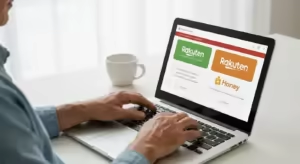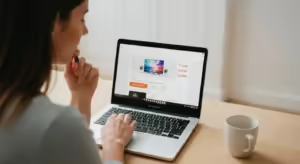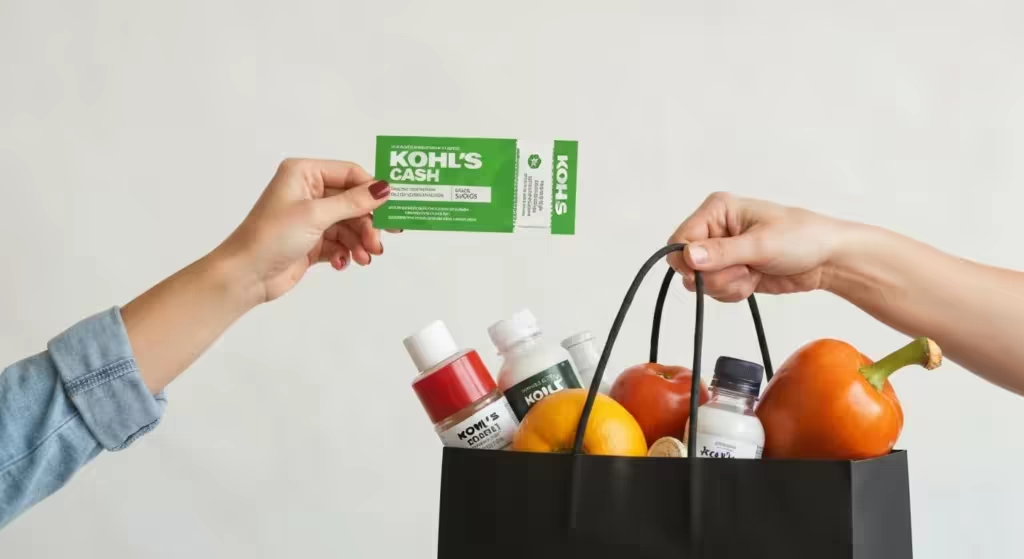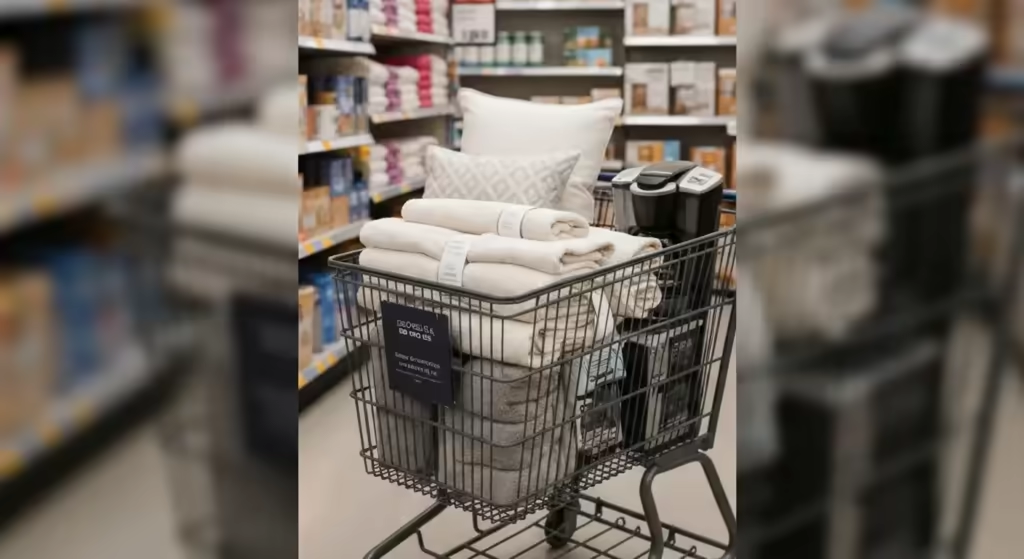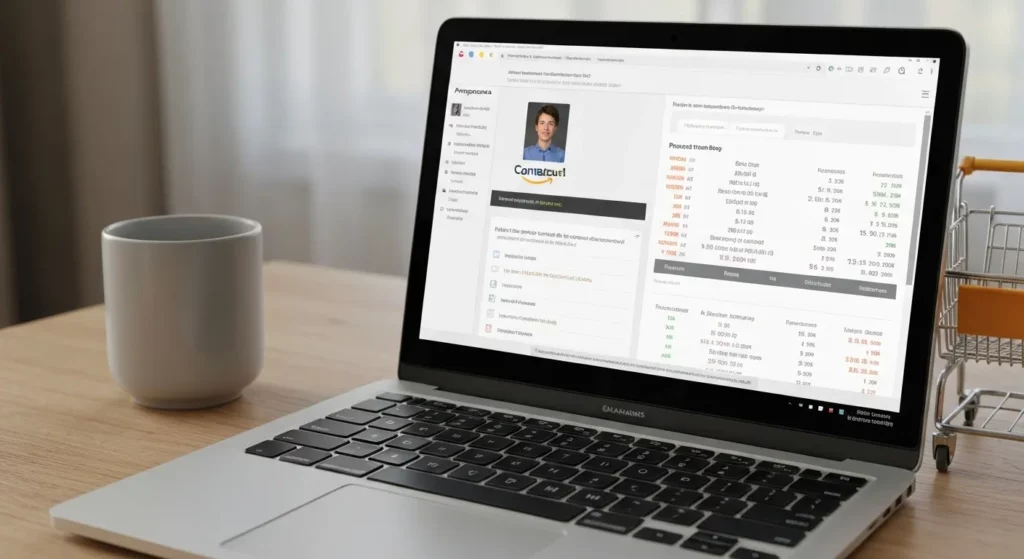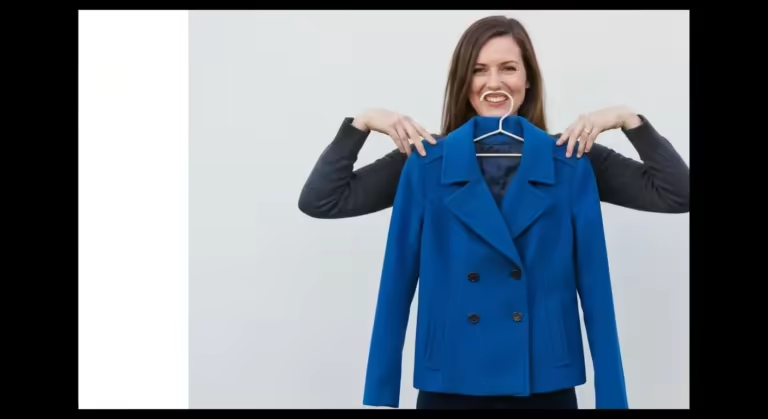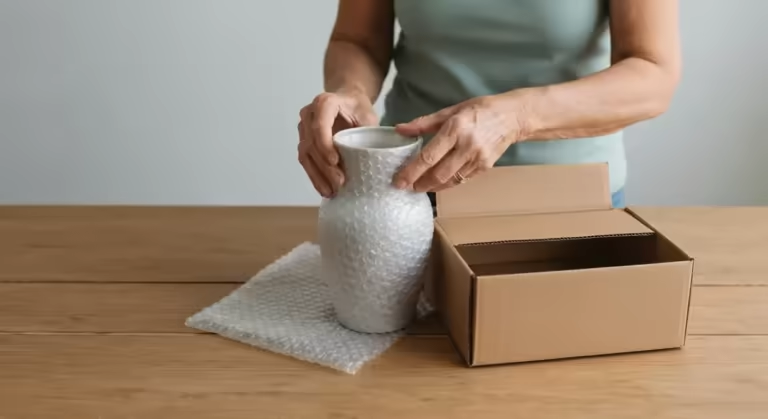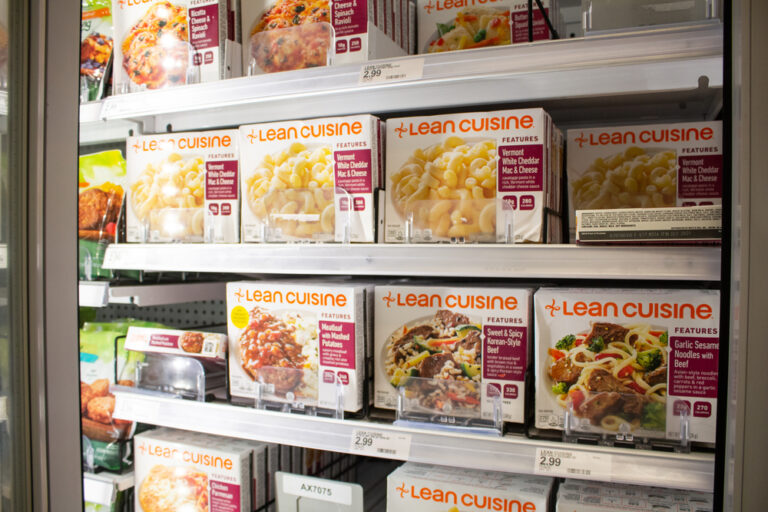It started with a bottle of shampoo. Not just any shampoo, but the kind my hair has preferred for the better part of two decades. It was nothing fancy, but it was familiar. Comforting, even. I remember standing in the aisle at my local CVS, staring at the price tag: $9.49. I blinked. I must have looked at it for a full minute, doing the kind of mental math that had become a new, unwelcome part of my daily routine.
Retirement was supposed to be about slowing down, not about scrutinizing the price of shampoo. My husband, David, and I had planned carefully. We had our savings, our pensions, our Social Security. We had a spreadsheet, for goodness’ sake. But spreadsheets don’t account for the relentless creep of inflation, for the sudden need for a new water heater, or for the simple, undeniable fact that everything just costs more now. Our comfortable “fixed income” had started to feel a lot more fixed than comfortable.
I put the shampoo in my basket with a sigh, along with a few other necessities—toothpaste, a bottle of aspirin, some greeting cards. At the checkout, the total made my stomach clench. It was a small amount in the grand scheme of things, but it felt significant. It felt like a loss of control.
The cashier, a kind young woman with purple-streaked hair, handed me my receipt. It was comically long, a scroll of paper filled with what looked like gibberish. “You’ve got some great coupons on here!” she said cheerfully. I glanced at it, saw a jumble of “Save $4 on your next $20 purchase” and “$3 ExtraBucks Rewards,” and felt a wave of exhaustion. It was just more noise, more to figure out. I mumbled a “thank you,” stuffed the receipt into my purse, and walked out feeling defeated.
At home, that receipt sat on the kitchen counter for three days, a silent testament to my financial anxiety. I was ready to toss it in the recycling bin along with the junk mail. But something stopped me. Maybe it was stubbornness. Maybe it was the memory of my mother, who could make a dollar stretch into what felt like ten. I remembered her little envelope of carefully clipped coupons from the Sunday paper. I had always found it a bit quaint, a relic of a bygone era. Now, staring at that CVS receipt, I felt a flicker of something else: curiosity.
I smoothed out the crumpled paper. What if this wasn’t junk? What if it was a map?
My First Fumbling Steps into the World of CVS
My initial foray into the world of CVS ExtraCare coupons was, to put it mildly, a disaster. I decided to start small. The receipt offered “$2 off any deodorant.” Simple enough. I needed deodorant. I marched back to the store a few days later, receipt in hand, feeling rather resourceful.
I found my usual brand, grabbed it, and went to the checkout. I proudly presented my coupon. The cashier scanned it. Beep. Nothing. He tried again. Beep.
“I’m sorry, ma’am,” he said, not unkindly. “This coupon is for the gel version. You have the solid.”
My face grew hot. I had to squint to read the fine print on the coupon. Sure enough, there it was. I felt foolish. People were waiting in line behind me. I apologized, paid full price for the deodorant (the wrong one, at that), and left as quickly as I could. The $2 I had hoped to save suddenly felt like a million-dollar failure. The whole endeavor felt complicated, designed to trick me. I was convinced it was a waste of my time and, more importantly, my dignity.
For a few weeks, I avoided CVS altogether. I bought my shampoo at the grocery store, telling myself it was easier. But the thought of it gnawed at me. It wasn’t about the $2. It was about the principle. I had been a project manager for 30 years before retiring. I organized complex projects with multi-million dollar budgets. I could certainly figure out how to save a few dollars on toiletries. I refused to be outsmarted by a coupon.
This time, I decided, I would approach it like a project. I needed a strategy.
The Sunday Morning Ritual: My “Aha!” Moment
One Sunday morning, I poured myself a second cup of coffee, laid out the CVS weekly ad from the newspaper, and opened my laptop. I downloaded the CVS app onto my phone, a device I mostly used for photos of my grandkids and the weather forecast. I meticulously linked my physical ExtraCare card—the little red tag that had lived on my keychain for years—to the app.
It was like a door creaked open. Suddenly, I could see all the “Send to Card” coupons. There were manufacturer coupons (the ones from brands like Crest or Tide) and store coupons (the ones from CVS itself, often styled as “CRTs” or Cash Register Tapes). I spent a solid hour just tapping and “clipping” every single coupon available to my card, whether I needed the item or not. It felt like gathering resources before a big mission.
Then, I turned my attention back to the weekly ad. I started to see the pattern. It wasn’t just about what was on sale. It was about the combination of three key elements:
- The sale price.
- The coupons I had clipped.
- The ExtraBucks Rewards offered.
This was my “Aha!” moment. The real savings didn’t come from using one of these things. The magic happened when you could combine all three. It was a puzzle, and for the first time, I felt like I was starting to see the full picture. My discouragement began to morph into determination. This was a game, and I was ready to learn the rules.
My Four Core Rules for Conquering CVS
Over the next few months, I developed a system. It wasn’t something I read in a blog post; it was born from my own trial and error, my own small victories and frustrating defeats. It became my personal strategy, my little secret weapon against that creeping feeling of financial helplessness. I boiled it down to four core rules that I still follow to this day.
Rule #1: The CVS App is My Command Center
I learned quickly that the physical, paper coupons were just the tip of the iceberg. The CVS app became my mission control. Before I even think about going to the store, I open it up.
First, I go through and digitally “clip” every single coupon available. It takes two minutes. Why clip everything? Because sometimes a surprise deal pops up, and I want to be ready. More importantly, CVS often sends personalized coupons based on your shopping history. The app is where I find those “$4 off a $20 purchase” or “30% off your entire order” gems.
Next, I scan the weekly ad directly in the app. I look for the ExtraBucks deals. An ExtraBucks Reward, I realized, is the cornerstone of the whole system. It’s not a discount. It’s essentially CVS cash that you earn for buying specific items. You spend it on your next transaction like real money. Understanding this was a fundamental shift in my thinking.
For example, the ad might say, “Spend $20 on select skincare products, get $10 ExtraBucks.” My old brain would have seen that as “Spend $20.” My new, strategic brain sees it as, “Get those products for half price after the reward.”
The app is also where I check my progress. It tells me which coupons I’ve clipped, which ones I’ve used, and how many ExtraBucks I have waiting for me. It’s my ledger, my inventory, and my guide, all in one place. I never go into the store without consulting it first.
Rule #2: The Art of the “Stack”
My first truly successful “stack” felt like winning the lottery. It was on toothpaste, of all things. I’ll never forget it.
The weekly ad had a sale on Colgate Optic White toothpaste for $3.99. When you bought two, you would receive $4 in ExtraBucks. So, two tubes would cost me $7.98, and I would get $4 back. Essentially, $3.98 for two, or $1.99 each. A decent deal, but not amazing.
But then I checked my app. CVS had sent me a digital coupon for “$3 off any two Colgate toothpastes.” At the same time, I had a digital manufacturer’s coupon for “$1 off any one Colgate toothpaste.” The app let me clip both.
I went to the store, my heart pounding a little with nerdy excitement. I picked up two tubes of the specified toothpaste. At the self-checkout (my new best friend, as it lets me go at my own pace without feeling rushed), I scanned the items. The total was $7.98.
Then, I entered my phone number. Magically, both the $3 CVS coupon and the $1 manufacturer coupon applied themselves. My total dropped to $3.98. I paid with my debit card. And as soon as the transaction was complete, the machine printed out a new coupon: my $4 in ExtraBucks Rewards.
Let me break that down. I paid $3.98 out of my pocket. I immediately received $4 in store credit. CVS essentially paid me two cents to take two tubes of toothpaste out of their store.
I stood there for a moment, looking at the receipt and the new ExtraBucks coupon. I felt a surge of pure, unadulterated triumph. It was exhilarating. This was the game. I had learned how to stack a sale price, a store coupon, a manufacturer coupon, and an ExtraBucks reward all in one transaction. From that moment on, I was hooked.
Rule #3: “Rolling” ExtraBucks is the Name of the Game
Once I had those first $4 ExtraBucks, a new level of the game unlocked. The goal is to never let them expire and to use them to pay for your next deal. This is what couponers call “rolling.”
My strategy became about planning my trips to turn one deal into the next. I would use the $4 I earned from the toothpaste to pay for my next transaction. Let’s say the next week, a certain brand of body wash was on sale for $5, with a $3 ExtraBucks reward for buying one.
I would go in, pick up the body wash, and go to the register. The total is $5. I would hand the cashier my $4 ExtraBucks from the toothpaste deal. My out-of-pocket cost would only be $1. And then, I would receive a *new* $3 ExtraBucks reward for buying the body wash.
Do you see the cycle? I started with an initial investment and then used the store’s “money” to fund my future purchases, all while collecting more store “money.” My real-dollar spending at CVS plummeted. Some weeks, my out-of-pocket cost is less than a dollar, but I walk out with a bag full of necessities.
This required a shift in my mindset. I stopped thinking transaction by transaction and started thinking week to week. My goal wasn’t just to save money on this trip, but to set myself up for savings on the *next* trip. It turned shopping from a chore into a long-term strategic endeavor.
Rule #4: The “Stock Up When It’s Free” Principle
This was the hardest rule for me to learn, as it goes against a lifetime of habit. The habit is: run out of something, go to the store, buy that thing. My new rule is: never buy something you need *today*.
Instead, I buy what is a “moneymaker” or nearly free *this week*, even if I don’t need it right away. My small linen closet slowly transformed into a very organized “personal store.” I have a shelf for dental care, a shelf for hair care, a shelf for paper goods, and so on.
When I see a deal like that free toothpaste, I do it, even if I have five tubes at home already. Because I know I will eventually use it, and getting it for free frees up my cash for things I can’t get at CVS, like fresh groceries or a tank of gas.
This requires patience. My favorite laundry detergent might not have a great deal for a month. In the past, this would have panicked me. Now, I just look at my shelf, see I have two bottles in reserve, and know I can wait. I am no longer a victim of the weekly sales cycle. I am in charge. I wait for the perfect storm—the sale price, the coupon stack, the ExtraBucks reward—and then I pounce.
This has been the most empowering part of the entire journey. I am no longer buying things out of immediate need, which is when you are most vulnerable to high prices. I am stocking my home with essentials at the absolute lowest possible cost, often for free.
More Than Just Savings: The Emotional Payoff
I won’t pretend this doesn’t take time. It does. My Sunday morning coffee ritual now includes about an hour of “CVS planning.” I build my little shopping list, note which coupons I’ll use, and map out my transactions. To some, that might sound tedious. To me, it has become a deeply satisfying mental exercise.
I’ll admit, in the beginning, I felt self-conscious. Standing at the register, carefully handing over my coupons, watching the total drop, I worried the people behind me were annoyed. I felt a little… cheap. One day, I had a particularly good haul—I must have saved over $40. The total on the screen went from nearly $50 to just a few dollars. The woman behind me gasped. “Wow,” she said. “How on earth did you do that?”
The cashier, who now knows me by name, just smiled and said, “She’s a pro.”
In that moment, my feeling of shame evaporated and was replaced by a quiet pride. I wasn’t being cheap; I was being smart. I was playing a game and winning. I explained my basic process to the woman, and she seemed genuinely fascinated. It was a small interaction, but it changed my perspective entirely.
The truth is, this journey was never just about saving money on shampoo. It was about regaining a sense of agency. When you’re on a fixed income, it’s easy to feel like you’re always on the defensive, reacting to rising prices and unexpected bills. This little hobby gave me an area of my life where I could be proactive. I could take control. I could use my brain and my planning skills to make a tangible, positive impact on our budget.
The money David and I save at CVS isn’t life-changing in a grand sense. We aren’t buying a yacht. But it adds up to a few hundred dollars a month, and that money has a real impact. It means we can take our grandkids out for ice cream without thinking twice. It means we can go out to dinner for our anniversary without feeling guilty. It’s the “fun money” that our budget didn’t have room for anymore. It’s breathing room. It’s peace of mind.
My Advice to You: Starting Your Own Journey
When I think back to that day I stood staring at the expensive shampoo, I feel a sense of gratitude for the frustration I felt. It pushed me to learn something new, to challenge myself, and to find a sense of accomplishment in an unexpected place.
If my story resonates with you, if you’re feeling that same pinch, I want to tell you that you can do this too. It’s not about being a math genius or having hours of free time. It’s about being methodical and patient.
If you’re looking to start, here is my heartfelt advice, distilled from my own messy, wonderful journey:
1. Start with the App. Before you do anything else, download the CVS app and link your card. Spend some time just exploring it. Clip every coupon you see. This is your foundation.
2. Aim for One Small Win. Don’t try to save $100 on your first trip. Find one simple deal. Maybe it’s a “Buy 1, Get 1 Free” on vitamins, or a simple ExtraBucks deal on candy. Experience the process from start to finish on one item. Feel the small victory of walking out having paid less than the sticker price. That feeling will fuel you for the next step.
3. Don’t Get Discouraged. You will make mistakes. You will buy the wrong size. A coupon won’t scan. You’ll forget to clip a digital offer. I still do sometimes! It’s okay. See it as part of the learning process, not as a failure. Every mistake taught me something important.
4. Redefine “Value.” The biggest lesson for me has been changing my definition of a good deal. It’s not just about a sale sticker. True value at CVS comes from that magical combination of sale price, coupons, and ExtraBucks. Once you start seeing the world through that lens, you’ll never look at a weekly ad the same way again.
Today, my little stockpile closet is a source of immense satisfaction. It’s not about hoarding; it’s about security. It represents hours of puzzle-solving, dozens of small victories, and the quiet confidence that comes from knowing I’m providing for my family in a smart, strategic way. And every time I reach for a bottle of shampoo that I know I got for free, I can’t help but smile.

